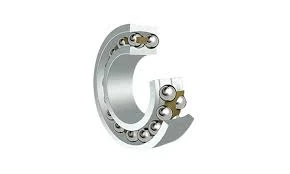
ਸਤੰ. . 25, 2024 15:16 Back to list
deep groove ball bearing contact angle
Understanding the Contact Angle in Deep Groove Ball Bearings
Deep groove ball bearings are one of the most widely used types of rolling bearings due to their versatile design and ability to accommodate light to moderate loads in various applications. A crucial aspect of their operation is the contact angle, which significantly influences their performance, durability, and application suitability. In this article, we will delve into the concept of contact angle in deep groove ball bearings, exploring its definition, significance, and implications for bearing performance.
Definition of Contact Angle
The contact angle in the context of deep groove ball bearings refers to the angle formed between the line of action of the load and a line drawn from the center of the ball to the contact point between the ball and the raceway. This angle influences the distribution of stress on the rolling elements and the raceways, which in turn affects the bearing's performance under various loading conditions.
Importance of Contact Angle
1. Load Distribution The contact angle directly impacts how loads are distributed across the rolling elements. A larger contact angle can allow for better handling of axial loads, while a smaller angle is more suitable for radial loads. This means that bearings with different contact angles can be optimized for specific applications, providing manufacturers with greater flexibility in design.
2. Friction and Wear The contact angle also influences the friction generated between the ball and the raceway. A greater contact angle tends to increase the line of contact, causing more friction and potentially leading to higher wear rates. Conversely, a smaller contact angle reduces friction but may also reduce the bearing's ability to handle axial loads effectively. Therefore, finding the right balance for the contact angle is essential for maximizing efficiency and longevity.
deep groove ball bearing contact angle

3. Bearing Life The relationship between contact angle and bearing life is critical. A well-optimized contact angle can lead to a significant reduction in stress concentrations within the bearing, prolonging its operational life. Manufacturers often utilize advanced simulation and testing to determine the most effective contact angles for specific applications, aiding in the design of longer-lasting bearings.
Applications and Considerations
Deep groove ball bearings are utilized in a multitude of applications, from electric motors and automotive components to industrial machinery and household appliances. Depending on the application requirements, the selection of the appropriate contact angle becomes paramount. For instance, in high-speed rotating equipment, a smaller contact angle may be preferred to minimize friction and heat generation, enhancing efficiency. Conversely, in applications where axial loads are prevalent, such as in gearboxes or wheel hubs, a larger contact angle might be necessary.
When designing or selecting a deep groove ball bearing, engineers must consider several factors, including load types, shaft alignment, potential misalignment issues, and the operational environment. Assessing these factors helps in choosing the right contact angle that optimizes performance while ensuring reliability and efficiency.
Conclusion
In summary, the contact angle in deep groove ball bearings is a critical parameter that influences load distribution, friction, and overall bearing life. Understanding and optimizing this angle is essential in bearing design and application, allowing for enhanced performance across diverse operating conditions. As industries continue to evolve and demand higher precision and reliability, the importance of analyzing the contact angle and its impact on deep groove ball bearings will only grow. Consequently, ongoing research and development in this area promise to yield even more advanced bearing solutions for the future.
Latest news
-
The Future of Deep Groove Ball Bearings For Extreme Applications
NewsJul.31,2025
-
Self-Lubricating Bearings: The Future of Agricultural Machinery Efficiency
NewsJul.31,2025
-
Nanotechnology in Ball Bearing Machines: The Future of Friction Reduction
NewsJul.31,2025
-
How Deep Groove Ball Bearings Are Tailored for Different Uses
NewsJul.31,2025
-
Energy-Efficient Machinery Bearings: Reducing Power Consumption in Large-Scale Ball Mills
NewsJul.31,2025
-
Deep Groove vs. Angular Contact: Which Ball Bearing Wins in High-Speed Applications
NewsJul.31,2025
